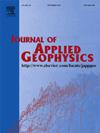A new fast imaging method for inline electrical source transient electromagnetic data
IF 2.2
3区 地球科学
Q2 GEOSCIENCES, MULTIDISCIPLINARY
引用次数: 0
Abstract
The transient electromagnetic (TEM) method is a widely used geophysical technique for obtaining electrical information about subsurface. In recent years, the electric source TEM method has gained popularity, particularly the inline configuration, which is highly sensitive to resistive targets. One of the key challenges in TEM research is the transformation of observed responses into resistivity-depth profiles. This paper introduces a new fast imaging method that addresses this challenge by directly converting the responses to resistivity-depth information. As the relationship between the TEM response and the resistivity is an implicit nonlinear function, we cannot get an explicit formula for the resistivity. Our method started from constructing a time constant using the peak-time of the impulse response and derived an explicit formula for the apparent resistivity. As a result, we can efficiently estimate the resistivity from the impulse response. Then, an apparent depth is defined based on the maximum depth of the electric field excited by a grounded wire source. Hence, the time-variant impulse response can now be imaged into the variance of resistivity with depth. To improve the accuracy of extracting the peak-time of the impulse response, an interpolation and re-extraction scheme is designed and applied. Numerical and field data examples are used to verify the effectiveness of the proposed fast imaging method. The results show that, compared with conventional apparent-resistivity imaging method, the proposed method is based on analytical derivation and can be used for at the full time range of the responses, thus with higher stability and calculation efficiency. Finally,
求助全文
约1分钟内获得全文
求助全文
来源期刊

Journal of Applied Geophysics
地学-地球科学综合
CiteScore
3.60
自引率
10.00%
发文量
274
审稿时长
4 months
期刊介绍:
The Journal of Applied Geophysics with its key objective of responding to pertinent and timely needs, places particular emphasis on methodological developments and innovative applications of geophysical techniques for addressing environmental, engineering, and hydrological problems. Related topical research in exploration geophysics and in soil and rock physics is also covered by the Journal of Applied Geophysics.
 求助内容:
求助内容: 应助结果提醒方式:
应助结果提醒方式:


